While genetic confirmation remains elusive for this unusual cross, the concept of a Cat Rabbit Mix, often termed a “cabbit,” is surprisingly well-documented, perhaps even more so than some seemingly more plausible animal hybrids like cat-dog or cat-raccoon mixes. The existence of the cabbit is fueled by numerous videos purportedly showing these creatures and countless eyewitness accounts.
The term “cabbit” (or “rabcat”) refers to the alleged offspring of a male rabbit and a female cat. This creature has a long and debated history. Skepticism is widespread, with many dismissing cabbits as biologically impossible. However, the sheer volume of anecdotal evidence suggests the topic deserves a closer look.
Take, for example, the intriguing case of an animal in Tucuman, Argentina. Videos of this creature appear to depict a genuine cabbit, seemingly defying biological norms. The animal’s front half strikingly resembles a cat, while its rear half mirrors that of a rabbit. Adding to the mystery, its locomotion is rabbit-like, exhibiting hops rather than feline movements.
Article continues below
Explore more cabbit videos >>
Read reports describing cabbits >>
Do Cabbits Actually Exist?
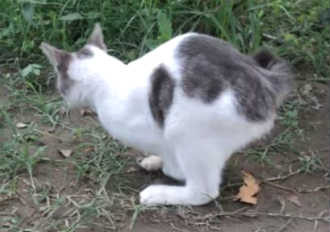 cabbit
cabbit
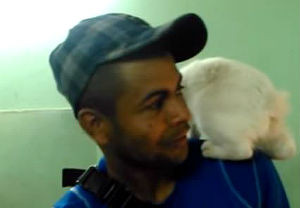 cabbit
cabbit
Screenshot from a cabbit video compilation, emphasizing the rabbit-like rear of the animal contrasting with its cat-like front. Is this a cat rabbit mix? Watch the video and decide. Watch the video >>
Unsurprisingly, the claims of cabbit existence have been met with considerable skepticism and even ridicule. Francis Trevelyan Buckland, a 19th-century naturalist, famously attributed purported cabbit sightings to “Manx cats with birth defects.” He humorously remarked, “To Mr. [Abraham Dee] Bartlett [then Superintendent of the London Zoo], are brought sometimes supposed hybrids between a cat and a rabbit. Our friend says a cat with a short tail will not prove the argument. He wants a rabbit with a long tail.”
Conversely, passionate proponents vehemently assert the reality of cabbits. Sarah Hartwell, who authored an article arguing against the possibility of cabbits, shared an email she received from a cabbit believer: “I just read your article on your web page and have to tell you that you are full of crap. Cabbits are real, I have had them and bred them and they are abundant in Ontario. No one has become famous, as you say about some vets in your article. It isn’t rocket science and no one will be getting a Nobel for it. They are an accepted species in Ontario. I have pictures and can describe anything you want to know about them. They have soft fur like the rabbit, look like a cat except they have the hind legs of the rabbit, they are silent, don’t meow and they kind of hop/walk. It is possible for some species to cross-breed, it just isn’t much thought of. You really should research before you go spouting off. What the hell are your qualifications anyways?? I and my parents before me have been registered breeders of the CKC [i.e., Canadian Kennel Club]. I can also tell you that I can tell when 2 animals are mating and when 8 weeks later babies are born and the only 2 “going at it” was the rabbit and the cat. They are not manx and you really should have a few certificates on your wall before you judge those of us who actually know what we are talking about.”
Article continues below
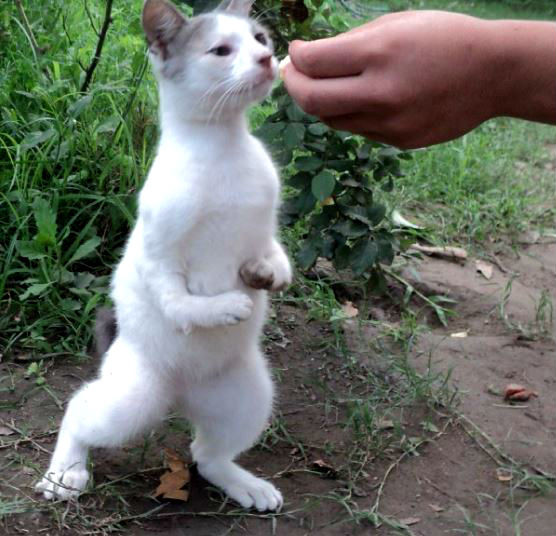 Cabbit
Cabbit
A video compilation showcasing alleged cabbits in motion.
This ongoing debate reveals a stark divide, with each side viewing the other as misinformed, perhaps even dishonest. Initially, the concept of such a distant hybrid seemed improbable. However, after examining numerous videos on platforms like YouTube presenting what appear to be living cabbits, a sense of wonder emerges. Genetic testing of these animals would provide definitive answers, yet no laboratory with the necessary resources has undertaken this investigation.
It is documented that male rabbits have been observed mating with female cats, a phenomenon readily found on video platforms. Furthermore, a dedicated page compiles videos showcasing ostensible cabbits, many exhibiting rabbit-like hindquarters and hopping locomotion. Are these simply Manx cats with birth defects, or are they genuine cat-rabbit hybrids? The evidence strongly suggests the need for deeper investigation. If these animals are hybrids, genetic analysis would easily confirm their status as first-generation (F₁) hybrids. Only subsequent backcross generations would present complexities in DNA evaluation.
Interestingly, cats have been known to nurse and raise rabbits. Animals raised by a different species may, upon reaching maturity, exhibit imprinting, leading them to favor mating with the foster species over their own. This can result in hybridization. The following video captures a cat nursing rabbits:
Article continues below
Rabbits nurtured in this manner could develop an imprint towards cats, potentially leading them to seek out cats for mating as adults – a crucial prerequisite for cabbit creation, if cabbits are indeed possible.
Regarding Manx cats, if their origin is hybrid (as explored in the section on Manx origins), the rabbit parent would likely be the European rabbit, Oryctolagus cuniculus, the sole rabbit species native to the Isle of Man. For the various ostensible cabbits depicted in videos, the specific rabbit species involved remains uncertain. However, the European rabbit, known for its invasiveness, has been introduced globally, and numerous domestic rabbit breeds closely related to it are popular pets.
Why the Impossibility of Cabbits is Claimed
From the Lubbock Evening Journal – Lubbock, Texas – May 27, 1953: CABBIT—Mrs. Norm Weiler of St. Petersburg, Fla., has a new pet, but she’s not sure what it is. The animal has the head and shoulders of a cat, and the body of a rabbit, while its voice is half growl, half meow. Mrs. Weiler, who adopted the creature when it wandered into her yard recently, calls her new pet “Cabbit.” She says it hates fish, loves cabbage and roast veal.
(This news snippet was typically accompanied by a photograph of a purported cabbit).
Chromosomes. A common argument against cabbit viability centers on chromosome incompatibility. Cats (2n=38) and rabbits (2n=44) possess differing chromosome numbers, leading some to believe hybridization is impossible. However, this assertion is contradicted by numerous well-documented instances of mammalian hybridization where parental chromosome number differences are even more significant. This website provides extensive documentation of such cases. For instance, sheep and goats, with a chromosome number difference identical to that of cats and rabbits (six), are known to produce hybrids occasionally.
A Twitter follower’s question: “But do cabbits eat carrots or fish?”
My response: “Most enjoy a nice mouse and tuna casserole with plenty of lettuce and carrots, and perhaps a light, re-ingestible pellet topping.”
(More seriously, observe the cabbit at the end of the video compilation, as it consumes a carrot and an avocado).
Gestation period. Another objection raised is the disparity in gestation periods between cats (approximately 64 days) and rabbits (around 31 days). This difference is often cited as a barrier to hybridization. This claim, however, is an age-old misconception, dating back to at least Pliny the Elder in the 1st century AD. Counterexamples abound, disproving this argument. The cama, a hybrid of a dromedary camel (13-month gestation) and a llama (11-month gestation), and the wolphin, a hybrid of a false killer whale (15.5-month gestation) and a bottlenose dolphin (11.5-month gestation), are well-established examples documented on this website. In the wolphin’s case, the gestation period difference is a significant four months, exceeding the one-month difference between cats and rabbits. Domestic pigs (115-day gestation) and babirusas (150-157 day gestation) also hybridize despite a 33% gestation period difference, comparable to the dolphin-false killer whale difference (34%). Thus, the gestation period argument against hybridization appears to be an unfounded myth, perpetuated by both scientists and laypersons alike.
| Cabbits— by Chris Millar Buck rabbit cat Rabbit bucks cat Buck rogers cat |
|---|
Genetic “distance.” A further argument posits that cats and rabbits are too genetically dissimilar to hybridize. However, all hybridization inherently involves genetically distinct parents, and the precise threshold of genetic difference precluding hybridization remains undefined, as does the nature of such prohibitive genetic divergences. (This is stated from the perspective of a Ph.D. geneticist with extensive hybrid research experience).
“Difference.” The claim that anatomical or evolutionary divergence prevents cat rabbit mixes is another point of contention. Hybridizing parents typically exhibit anatomical differences, and the limits of anatomical disparity allowing for hybridization are unknown. Similarly, the extent of evolutionary divergence permissible for hybridization is also undefined. Perhaps the cat-rabbit hybrid case itself offers insights into these limits.
 cat-rabbit hybrid
cat-rabbit hybrid
Fertility. Regarding the specific cat-rabbit cross, some argue that the existence of the Manx cat breed, known for producing fertile offspring, disproves the hybrid theory, as hybrids are typically infertile. However, this logic rests on false assumptions. Many documented hybrid crosses yield fertile or partially fertile offspring. Furthermore, numerous fertile domestic breeds are known to be products of hybridization. Therefore, Manx cat fertility does not preclude a cat-rabbit hybrid origin.
The “Manx gene.” In fact, Manx cats are not as fertile as typical domestic cats. They exhibit a higher rate of offspring inviability, a characteristic often associated with hybrids. This reduced viability is attributed to the hypothetical “Manx gene.” However, no formal study characterizing or even mapping this gene to a specific chromosome has been found, challenging the established explanation.
Article continues below
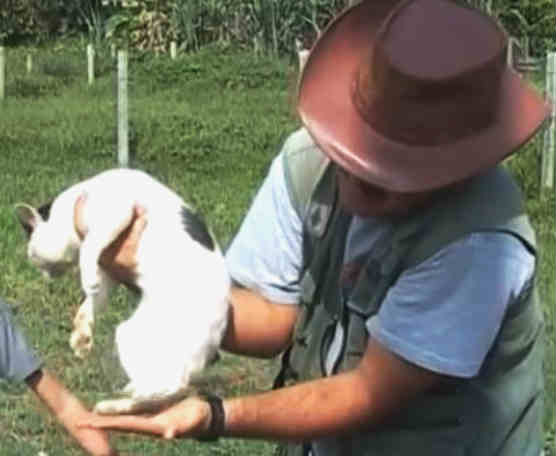 Cabbit (Watch the video here).
Cabbit (Watch the video here).
When Gametes Meet— by Gene McCarthy
Two gametes meet and say hello.
Perchance their sum is apropos.
But in advance, you never know.
It’s been observed that mating tailless Manx cats results in higher offspring inviability compared to mating a tailless Manx with a tailed Manx (Deforest and Basrur 1979). These authors link severe Manx disorders like spina bifida, urinary and fecal incontinence, and pelvic limb locomotor disturbances to the tailless condition. However, an alternative interpretation suggests that tailless Manx cats might represent first-generation (F₁) cat-rabbit hybrids, while long-tailed Manx cats could be backcrosses to purebred cats. In many hybrid crosses, mating F₁ hybrids with backcross hybrids can increase viable offspring compared to F₁-F₁ pairings.
Conclusion. One could assume Manx cats are products of mutation, unrelated to rabbit ancestry. However, this necessitates believing that a mutation (or series of mutations) coincidentally made the Manx’s posterior half resemble a rabbit’s – the short tail, hopping legs, and blunt claws. It also requires attributing the Manx’s dietary preferences for carrots, lettuce, and grass to mutation. Furthermore, all disorders associated with Manx cats would need to be considered coincidental mutation side effects – mutations that remain genetically undefined. Finally, one must accept that breeders could, through selective breeding of ordinary cats, achieve rabbit-like hindquarters through unknown genetic changes.
This is a lot to accept. Are there other instances of breeders transforming an animal’s hindquarters to resemble another distinct animal through selective breeding? Isn’t it more straightforward to consider that Manx cats possess rabbit-like traits, reduced fertility, frequent inviable offspring, and hybrid-typical dysfunctions because they are, in fact, cat-rabbit hybrids? As Samuel Johnson famously stated, “The solution as I have given it, is plain. Suppose, I know a man is so lame that he is absolutely incapable to move himself, and I find him in a different room from that in which I left him; shall I puzzle myself with idle conjectures, that, perhaps, his nerves have by some unknown change all at once become effective? No, Sir; it is clear how he got into a different room: he was carried.”
This article is adapted from a chapter in the book Telenothians, available here.
Explore more cabbit videos >>
Read reports describing cabbits >>
A Compilation of Reported Cat Crosses
The following list details reported cat crosses, varying significantly in their level of documentation and plausibility. Some may seem biologically impossible, yet each has been reported at least once. Links lead to dedicated articles for further exploration. Additional crosses are discussed on the cat hybrids page.
Sheep-pig hybrids?
| ![reliability arrow]() |
|---|
Cat × Wildcat >>
Lion × Tiger >>
Jaguar × Lion >>
Leopard × Lion >>
Jaguar × Leopard >>
Cat × Pallas’s Cat >>
Cat × Rabbit (Cabbits) >>
Cat × Marten >>
Leopard × Tiger >>
Cat × Dog >>
Cat × Raccoon >>
Cat × Possum>>
Cat × Chicken >>
Cat × Kangaroo>>
Puma × Bear >>
Puma × Dog >>
Cat × Duck >>
Cat × Human >>
Cat × Rat >>
Cat × Opossum >>
Cat × Squirrel >>
Cat × Horse >>
| Most shared on Macroevolution.net: Human Origins: Are we hybrids? On the Origins of New Forms of Life Mammalian Hybrids Cat-rabbit Hybrids: Fact or fiction? Famous Biologists Dog-cow Hybrids Georges Cuvier: A Biography Prothero: A Rebuttal Branches of Biology Dog-fox Hybrids |
|---|
Cat-rabbit Hybrids – © Macroevolution.net

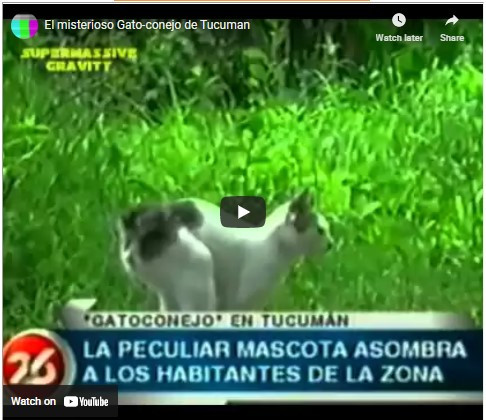
 cat nursing rabbits
cat nursing rabbits